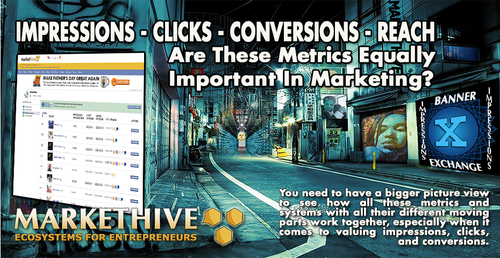
IMPRESSIONS – CLICKS – CONVERSIONS – REACH
Are These Metrics Equally Important In Marketing?
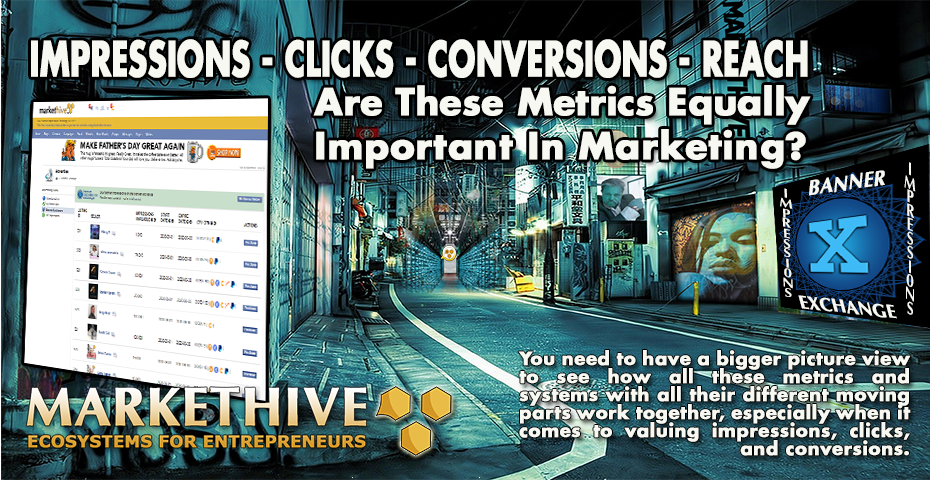
Do you just randomly post advertisements in the hope they bring results without knowing the statistics of the process? Sorting out the data produced by an online advertising campaign can be an intimidating task, especially if you’re new to online advertising. If you’re a marketer you will have heard of the terminology used to measure statistics of an online ad campaign but it’s not always clear or understood how they are differentiated and why all metrics are equally important.
Many understand the importance of social media engagement, however, when it comes to strategy, it’s critical to know the difference between the key terms or metrics, that are frequently used, as it will help you make sense of your campaign statistics. It’s all about accurately measuring your data to know what’s working and identifying areas where you can increase your efforts or improve on your content where it’s not working so well.
Defining The Basics Of Metrics
REACH
Reach is the total number of unique people who can see your ad or content. If 1000 people in total have seen your ad, that means your ad’s reach is 1000.
The advantage of having accounts on various social media platforms and a central system that allows you to broadcast your blog or advertisement to those individual platforms have the potential to increase your reach into the millions. Markethive, with its proprietary blogcasting system, is the springboard and gives you the ability to create massive reach which is exponential and very powerful.
For example, If I subscribe to your blog and I have 20,000 followers across all my social media accounts, and you have 15,000 subscribers each with a similar following, your blogs have now been potentially seen by around 300,000,000 people which by enlarge are not directly subscribed to you.
Every time you publish a blog with Markethive as the core platform, that article is posted out to literally hundreds even thousands of social network news feeds and WordPress sites.
IMPRESSIONS
Impressions are the number of times your content or advertisement is delivered and displayed on any given website or page. Let’s say that your ad from the previous example above popped up on those people’s screens a total of 3000 times. That means the number of impressions used for that ad is 3000.
Impressions are where your online advertising begins, and most likely where you will see the highest numbers as an impression is generated every time a webpage is loaded and potentially viewed. It’s important to note that just because the banner was displayed doesn’t guarantee the visitor saw it.
It’s a bit like driving past a billboard on the side of the road, the ad is displayed continuously but it doesn’t mean that you took any notice of it. So, in a sense, every car that passes the billboard would represent an impression, as the potential for the ad to be viewed is there but no guarantee that every driver saw it.
Impressions are typically used for displaying banner advertisements across the internet on any site that allows this type of advertising. This comes at a cost that varies across the board and usually set by the management of the company website. See some comparisons here
This protocol has now been preceded by a new system that is unprecedented, as Markethive, the social market network and ecosystem for entrepreneurs have developed a Banner Impressions Exchange (BIX) which is advertising as a non-fungible token built into an exchange.
This system delivers to the media buyer a transparent value for their impressions in an exchange type environment. This ensures open market principles, allowing the media buyer to buy impressions from the exchange similar to buying coins in a coin exchange. The market sets the price.
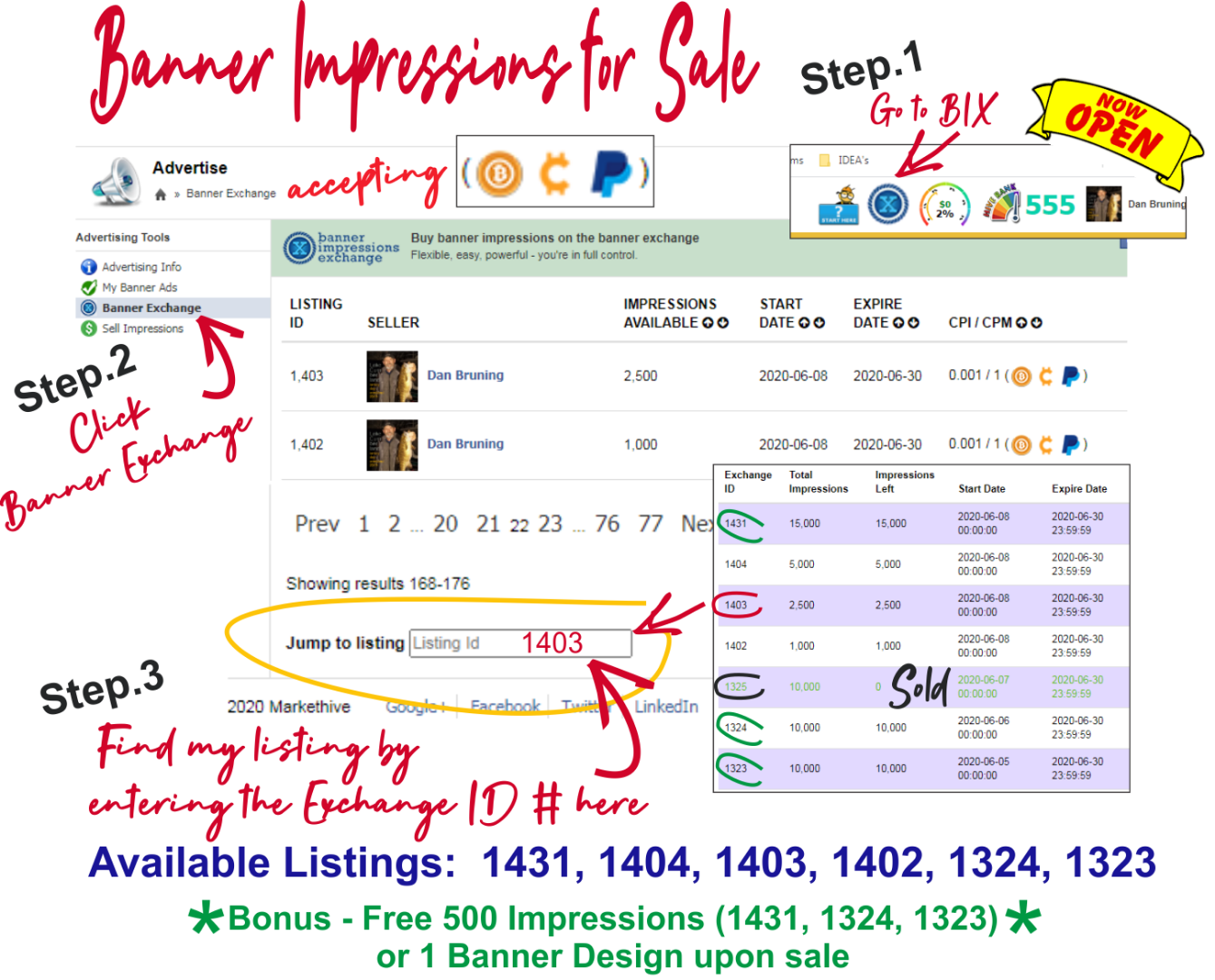
Image credit – Markethive Associate, Dan Bruning
Traffic Impressions Are Like Electricity
Traffic impressions are like electricity, in that they cannot be stored, they are only effective at the moment as is electricity. As electricity the rate or cost is determined by the utility at a set rate, as is the case across the world or as is now that case the price is determined in the exchange based on supply and demand, making its value determined by the demand and effectiveness.
This also means third party sites can join the Markethive Banner Impressions Exchange to put their impressions up for sale based on the same principle of supply and demand and the free market driving the value accordingly.
In the case of the Banner Impressions Exchange, impressions can not be rolled over to the following month. If they are not allocated to a particular banner advertisement or sold to a buyer within the present month, they are purged at the end of that month and replaced by the next month’s impression allocation.
CLICKS
Clicks are usually seen as the most important step in the online advertising process, as a click means you have an interested visitor and a potential sale.
A click is recorded when a visitor clicks on your banner which takes them to your website where a lead is captured or the possibility of a sale. But when it comes to clicks in relation to impressions, you need the impressions to generate a click and since not every person who views your banner (which is counted as an impression) will click on it, you will always have more impressions than clicks.
This ratio of clicks to impressions is measured by what’s known as the click-through rate (CTR). To calculate CTR, simply divide the number of clicks by the number of impressions.
For example, if your banner received 1,000 impressions and out of that you got 25 clicks, you would have a 2.5% CTR. The rule of thumb is that a banner with a high CTR is effective at grabbing a visitor’s attention, while a low CTR banner means that you may need to tweak something about the banner image or ad text to hopefully harvest more clicks.
Your ideal ad click-through rate takes time to determine. It’s not the same for everyone, and average CTR also depends on such factors as your industry and keywords, and how competitive they are.
Based on the internal data of Wordstream, they’ve determined that the average CTR across all industries in Google Ads is 1.91% on the search network and 0.35% on the display network. The graphic below shows the variation in the average click-through rate for twenty different industries.

Image Credit – Wordstream
CONVERSIONS
Conversions are the ultimate goal and end result that every marketer sets out to accomplish.
Generating conversions means that the purpose of the advertisement/banner has been achieved. The term conversion covers a broad spectrum of actions including capturing a lead, making a sale, or just having a visitor download an ebook or whitepaper, etc. It’s good to measure the effectiveness of any campaign by determining how many conversions are achieved to how many dollars spent. This calculates your return on investment (ROI).
All Metrics Are Equally Important
When you’re analyzing your campaign data, it’s not a good idea to draw conclusions based upon only one metric. You always need to consider how each metric relates to the other.
For example, (1) you may have an ad that has a particularly high CTR, but a disheartening conversion rate. Or the opposite, (2) you may have an ad that gets very few clicks, but when it does, it almost always converts.
The first scenario is not ideal because you’ll spend a lot of money on clicks but have little to show for it especially if you’re using pay per click (PPC). The second scenario is not really okay either, because you won’t be able to properly scale that campaign to any significant size.
One of the most reliable ways to determine where best to channel your resources is by using a metric known as “Profit per Impression” (PPI). This metric takes both the beginning being impressions, and ending being conversions or (profit) points of the advertising process, and uses them to determine the ultimate viability of an ad campaign.
This is particularly helpful when participating in Markethive’s Banner Impressions Exchange, where you can purchase impressions for your Banner Ad Campaigns.
How Do You Calculate PPI?
The way to calculate PPI is to simply find out how much profit (not revenue) you generated from a campaign, and then divide that by the number of ad impressions it took to produce that profit.
For example, if it took a total of 90,000 impressions to produce $20,000 in profits, then your PPI would be $0.22 ($20,000 divided by 90,000 impressions). This enables you to see how well your banners perform after all costs have been accounted for. Campaigns with high PPIs will ultimately be the best candidates for scaling and growth.
By keeping the Profit per Impression (PPI) metric in mind gives you more confidence and you will be more clear as to which ads will ultimately generate the most profit for your advertising campaign.
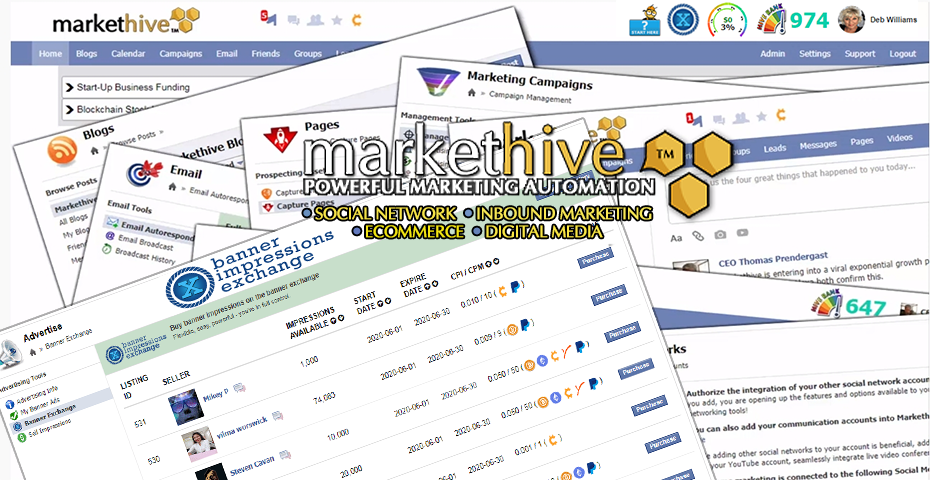
Another Factor To Consider – The Rule Of 7 – What Is It?
The Rule of 7 is a marketing principle that states that your prospects need to come across your offer at least seven times before they really notice it and start to take action. Your prospects can be exposed to your offer significantly more than seven times, but they need to see it at least seven times.
This helps them remember you amongst an overwhelming amount of marketing messages, other information or clutter, and positions you to get better results from your marketing efforts. It’s not just about banners – social media and all digital marketing require a thoughtful content strategy approach. This is accomplished by sharing content, interacting with people, and targeting ads to people who are interested in what you sell.
Socially-savvy companies like Markethive have the best of both worlds when it comes to marketing your business. It has the social newsfeed and specific storefront groups, inbound marketing tools, and now the banner impressions exchange. This gives you the ability to engage with prospects at every level of the buying process as it’s been proven that the more positive contact you have, the easier it is to develop and sustain relationships and ultimately attain more sales.
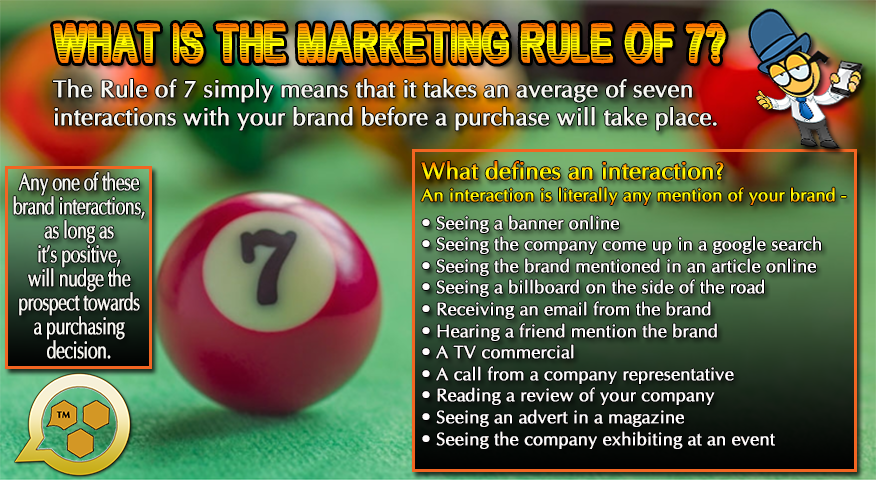
What Can Marketers Do To Capitalize On The Rule Of 7?
So if the Rule of 7 involves encouraging repeat interactions with prospects, how do you do this?
-
Have a very clear idea of who your customers are. Develop a plan to make yourself visible amongst your target customers and know where they hang out or which websites they visit.
-
Make quality and consistent use of Banner Advertising on high profile sites with lots of relevant traffic.
-
Have a content marketing plan that gets your prospects to notice you, so you need to provide content they perceive will add value for them. Your blogs or articles should start conversations and prompt people to want to find out more about you and your product, so make sure you have the necessary calls to action to lead them to where you want them to go.
-
Amplify your content into social media. Ideally, your content will get you some SEO visibility, but broadcasting your content to the various social media channels will increase your reach.
-
Have an email nurture campaign. Don’t think of email as an opportunity to make sales. Think of it as a way to help and nurture your prospects and customers. Drive email opt-ins by offering helpful free content that they can subscribe to.
With these initiatives in place, you will start to develop a level of visibility that will mean your prospects are being more frequently exposed to your brand. This can all be achieved and facilitated within the Markethive Platform utilizing its comprehensive range of marketing tools.
The result will be an increase in brand searches, an increase in the number of inquiries, leading to an increase in sales. Don’t expect overnight results, this requires a consistent, long term effort.
You need to have a bigger picture view to see how all these metrics and systems with all their different moving parts work together, especially when it comes to valuing impressions, clicks, and conversions. The best way to get a good understanding of how these factors work together and track your results is to constantly test and tweak your marketing campaigns.
References; 260Digital B2B Marketing

Deb Williams
A Crypto/Blockchain enthusiast and a strong advocate for technology, progress, and freedom of speech. I embrace "change" with a passion and my purpose in life is to help people understand, accept, and move forward with enthusiasm to achieve their goals.

